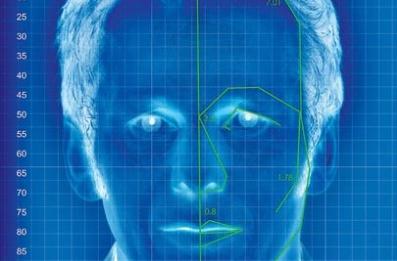Face-Scanning for Targeted Advertising Rolled Out In London
Minority Report-Style technology labeled “creepy”

High-definition face-scanning cameras have been installed at a bus stop in Oxford Street, London as part of a new invasive advertising campaign that uses Minority Report-style technology to deliver gender-specific targeted ad content.

“With a 90 percent accuracy rating, the computer built into the placement analyzes and guesses gender based on specific facial attributes of the jawline, cheekbones, nose and eyes. Based on the current guess of a pedestrian’s gender, the digital placement shows an advertisement targeted at a man or a woman. As this technology continues to be applied to the field of advertising, the computer could also make a judgement about a person’s age, race or body type,” reports Digital Trends.
The $60,000 dollar ad, displayed on a screen that is a cross between an iPad and an XBox Kinect, plays a 40 second video message when a female’s face is scanned but only a brief message if a man walks past. “We’re not giving men and boys the choice to see the full ad on this occasion – so they get a glimpse of what it’s like to have basic choices taken away,” said Marie Staunton, chief executive of Plan UK, the organization featured in the ad.
The technology itself was developed by Clear Channel UK and 3D Exposure, who assert that while concerns about people being subjected to Minority Report-style invasive advertising have been voiced, what they are working on for future projects “may soon surpass what we’ve seen at the cinema.”
Privacy watchdog The Open Rights Group labeled the idea “creepy”.
The 2002 movie starring Tom Cruise depicted Cruise’s character walking through a subway station while sensors that scan his eyes address him by name and bombard him with personalized ads. Another clip shows people boarding a train also having their irises scanned for approval. The movie was based on a dystopian short story by Philip K. Dick which warned of how such technology would be used in the future to crush privacy and civil liberties.
Clear Channel are by no means the only major company to be working on the new wave of invasive advertising. Last year, IBM announced that they are planning to scan “RFID technology that people are carrying around with them” in order to tailor ads to specific consumer tastes.
We have previously covered the fact that private industry and eventually government are set to implement plans to use microphones and cameras in the computers and TiVo style boxes of hundreds of millions of Americans to monitor their lifestyle choices and build psychological profiles, which will be used for invasive advertising and data mining.
In 2006, Google announced that they would use in-built microphones to listen in on user’s background noise, be it television, music or radio – and then direct advertising at them based on their preferences.
“The idea is to use the existing PC microphone to listen to whatever is heard in the background, be it music, your phone going off or the TV turned down. The PC then identifies it, using fingerprinting, and then shows you relevant content, whether that’s adverts or search results, or a chat room on the subject,” reported the Register.
The expiration of a key technology patent is paving the way for a scramble amongst scores of biometrics research and development companies, all desperate to make their own brand of iris scanning technology commonplace, effectively creating a real life Minority Report society, where everyone is linked into an identification database.
As detailed by Bloomberg News , the patent for recording the unique characteristics of the Iris as a form of identification was granted to two eye doctors in 1987, who then approached a Cambridge University professor to develop a way of automating iris identification. That further patent was granted in 1994, but it expired last year, opening the door for the new wave of invasive advertising technology to be implemented.
Leading marketing companies believe that within the next five years, iris recognition technology will create over $2 billion in revenue by becoming a routine part of everyday life.
London’s innumerable bus stops have often been used as testing ground for Big Brother-style initiatives. In 2002, Transport For London displayed a billboard to promote their CCTV surveillance technology which depicted Orwellian irises in the skies of London beneath the words “Secure Beneath the Watchful Eyes”.

